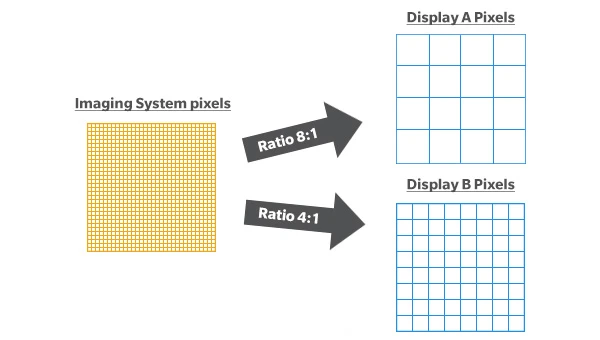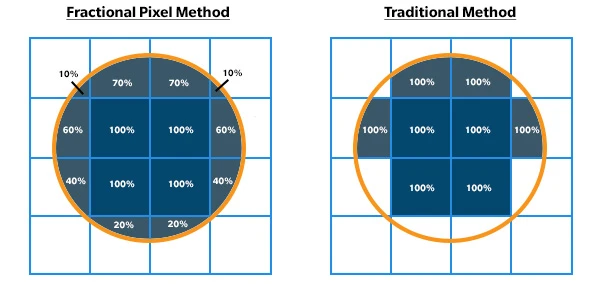How To Ensure Pixel Uniformity in High-Resolution Displays?

Nowadays, people are increasingly demanding display panels with higher resolution in their electronic devices like smartphones, laptops, televisions, etc. This drives the progression from liquid crystal display (LCD) technology toward pixel-dense display technology like OLED (organic light-emitting diode), microLED, etc. However, as the pixel density increases, the more challenging it is for display manufacturers to inspect the display quality, especially brightness and color uniformity.
Challenge In Measuring Pixel-Dense Display
Displays like OLED and microLED are emissive, where each pixel, comprising red, green, and blue subpixels, produces its own light independently. This can result in variations in brightness and color output from pixel to pixel, causing a non-uniform appearance across the display. Correcting the emissive display whereby the input of each subpixel is adjusted individually is necessary to achieve uniform brightness and color across the display. The typical method of correcting display uniformity involves using an imaging system to measure the luminance and chromaticity of the individual subpixel. The measured luminance and chromaticity values are then used to calculate the correction coefficients that will be applied to the signals of each subpixel.
However, as the resolution and pixels-per-inch (PPI) of display increase, ensuring accurate and repeatable measurement becomes more challenging. An imaging system needs to have much more sensor pixels (camera resolution) than display pixels (display resolution) to capture the luminance and chromaticity data accurately and quickly. But as the overall number of pixels increases in a display, the ability of an imaging system to allocate sufficient sensor pixels per display pixel reduces. As shown in the illustrative example below, an imaging system may have enough sensor pixels to cover the display pixels in display A but lose measurement precision when it comes to a higher resolution display like display B.

Illustrative example of imaging system sensor pixels vs. display pixels
While it is possible to measure multiple sections of the display and stitch all images together to overcome the resolution limitation of an imaging system, this method is not efficient to meet the high-volume manufacturing takt time requirement. Another challenge when measuring pixel-dense displays is the proximity of the pixels. As the pixels are very close to each other, traditional whole-pixel measurement methods may factor in the luminance of neighboring pixels, giving us false luminance variability of the pixels.
Fractional Pixel Method
An improved measurement approach using the fractional pixel method by Radiant Vision Systems (RVS) offers accurate pixel and subpixel measurements even when the imaging system sensor pixel per display pixel is limited. This method uses the mean luminance values to establish and center the region of interest (ROI) on the display pixel rather than the sensor pixel. Subsequently, it calculates the luminance and chromaticity of the pixels based on the proportion of each sensor pixel within the ROI as opposed to the traditional measurement methods that use 100% of the data only from sensor pixels whose areas are more than a certain size within the ROI.

Illustration of fractional pixel method vs traditional whole pixel measurement method
ProMetric® Imaging Colorimeters and Photometers
High-resolution and pixel-dense display inspection are made easy with RVS’s ProMetric® I series Imaging Colorimeters and Y series Imaging Photometers that are equipped with scientific-grade image sensor that offers high spatial resolution of up to 61 MP. Together with their high-speed and broad dynamic range capabilities, the ProMetric® imaging colorimeters and photometers can easily measure display pixels and subpixels with repeatable accuracy and speed. Combing with Konica Minolta Sensing display measurement instruments like color analyzers and spectroradiometers, other key characteristics of the display, including color gamut, gamma, flicker, etc., can be evaluated with ease.
Need assistance finding the right instruments and solutions for your display testing? Get in touch with our specialists for a free consultation now.
